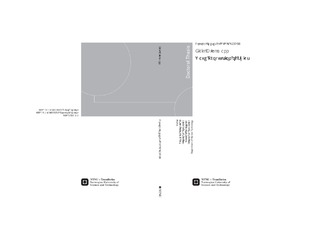| dc.description.abstract | Propelling a boat forward by converting wave energy into propulsive thrust was first proposed in 1858 and first successfully done in practice in the 1890s - to the
author's knowledge. Several experimenters have since demonstrated the feasibility
of wave-powered boats, both in model and full scale. The most common type of
wave-powered boat, and also the type studied in this thesis, is a boat with foils
that convert the vertical motion in waves into propulsive thrust. In addition to
saving fuel, another benefit of these foils, called wavefoils in this thesis, is that
they significantly reduce the most violent vessel motions.
Previous theoretical models of wavefoils have neglected the effect of stall, which
is reasonable only for small wave height and/or if the ship speed is high. To
be able to simulate all wave conditions in real-time or faster, a slightly modified
version of the Leishman-Beddoes dynamic stall model for the wavefoil forces was
implemented in the time-domain ship simulator VeSim from MARINTEK. This
model was compared with experiments and was found to give good estimates of
the average foil thrust, although the experimental force histories were not always
well reproduced by the model.
The drawback of a spring-loaded wavefoil, which is commonly used to reduce
the maximum angle of attack below the stall limit, is that the spring stiffness needs
to be tuned for the instantaneous wave condition. In this thesis, two experiments
where the foil was pitched automatically by a motor - so-called active pitch control
- are presented. A model of a platform supply vessel was outfitted with a wavefoil
with pressure sensors on and near the leading edge. The purpose of the pressure
sensors was to relate the leading-edge pressure to the angle of attack. The actively
pitch-controlled foil resulted in less ship resistance in waves than the fixed foil in
some cases but could potentially have performed better with a stiffer pitch actuation
mechanism. Another method of pitch control, where freely-rotating vanes near the
foil detected the angle of attack, was also tested, with an improved pitch actuation
mechanism. This method of pitch control relies on the value of a parameter in the
control algorithm to result in reduced ship resistance, and this was also observed
in the experiments.
A spring-loaded foil was tested without the ship model and produced higher
thrust than the actively pitch-controlled foil with angle of attack vanes. The added
mass force is believed to have caused a more beneficial pitch motion for the springloaded
foil than for the vane-based pitch-controlled foil.
The experiments were compared with simulations in VeSim. Foil thrust and
ship motions agreed fairly well in simulations and experiments, but there was less
agreement for the ship resistance. At moderate speed, pitching the foil, either
actively with a motor or passively with a spring, was shown to only be important
for the wave periods producing the most violent ship motions. Simulated fuel
savings for the vessel operating in irregular waves, with one wave height and three
wave periods commonly found in the North Sea, were well above 30% when sailing
at 8 knots for several wave directions but decreased with increasing speed.
A ship entirely powered by renewable energy was proposed and simulated. The
ship was propelled by wind and wave energy using wingsails and wavefoils, while solar panels provided the necessary electricity for onboard use. Sailing between
the Azores and Madeira, round-trip, the expected ship speed was 5-6 knots with a
standard deviation of approximately 4 knots, for all four seasons.
Experiments were performed with a small radio-controlled ship model, outfitted
with a spring-loaded wavefoil underneath the bulb. The influence of the springstiffness on the ship speed was small in the experiments, and this was also found
in simulations. Although the wavefoil was only beneficial for two of the three wave
periods tested in the experiments, and only in head seas, simulations showed that
the wavefoil is much more beneficial in full scale. | nb_NO |
